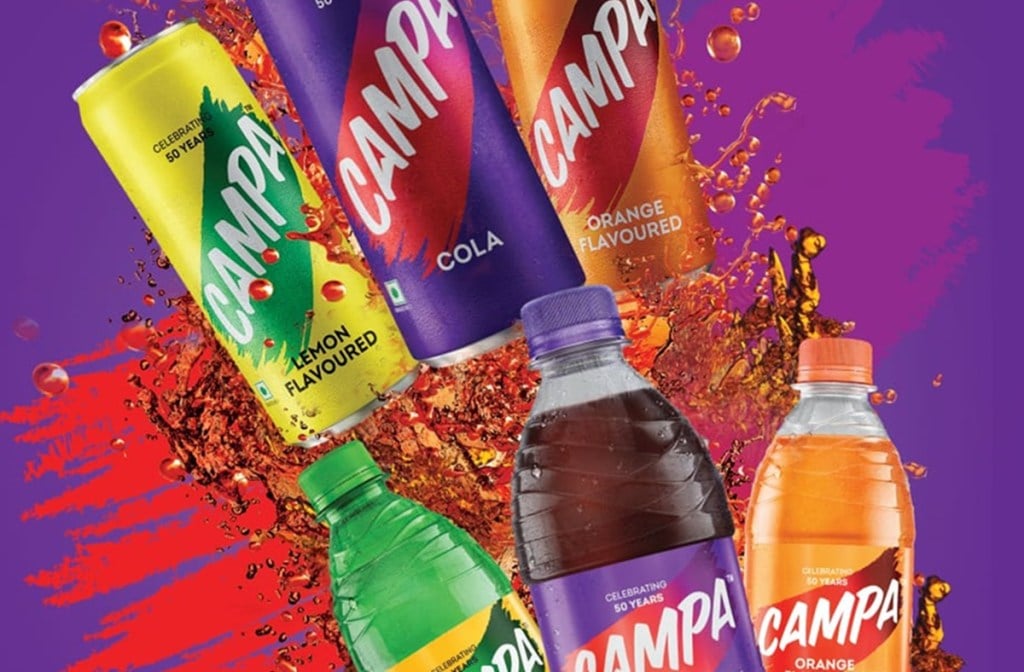Last week, when Pepsi took a swipe at Coca-Cola’s half-time campaign with a cheeky frontpage ad while also bringing back its popular tagline ‘yeh dil maange more’, it took consumers back to the many clashes the two brands have seen particularly during the 1990s. Pepsi’s campaign, conceptualised by Havas Creative, takes consumers on a nostalgic journey reminiscent of the iconic 1996 campaign that poked fun at Coca-Cola’s official sponsorship of the ICC cricket World Cup that year. The campaign, featuring cricketing icons like Sachin Tendulkar and Mohammed Azharuddin, struck advertising gold with its clever ‘nothing official about it’ catchphrase.
“For those who remember, ‘nothing official about it’ wasn’t just a campaign — it was a cultural moment. It showed that sometimes, not trying too hard is exactly the winning move,” PepsiCo India said in a statement, indicating that its latest ad is a continuation of that legacy.
Reliance’s aggressive Rs 10 pricing for the recently revived Campa Cola and its new energy drinks is pushing legacy players to try harder, say experts. In certain markets such as Kolkata, Coca-Cola has dropped prices to Rs 15 for the 250 ml pack to take on competition from Campa. Both Pepsi and Coca-Cola recently introduced 400 ml packs for Rs 20, offering 150 ml free. Analysts note these aggressive price points may not be sustainable, considering this is a low margin business.
Earlier this year, Reliance’s Campa snapped up the IPL’s second most-valuable sponsorship deal, the co-presenting rights for Rs 200 crore, beating Coca-Cola’s Thums Up that held the rights last year. According to observers, the deal indicates Reliance’s pan-India ambitions since until last year, Campa Cola was available only in select markets.
Some reports indicate that the brand has already garnered 10% of the carbonated beverage market in some states. And the Reliance strategy in this market has been as disruptive as it has been in other sectors.
Pepsico and Coca-Cola, which have an estimated 85% of the cola market, will naturally be feeling the heat with Campa’s aggressive advertising strategy.
Raising the stakes
The carbonated soft drinks market is valued at around $80 billion. Within this, the cola segment is around $20 billion, estimates Ankur Bisen, senior partner and head, consumer, food & retail, Technopak Advisors. Among the two prominent players in the category, Coca-Cola currently leads Pepsi, with homegrown Thums Up being the biggest selling brand.
“This is a category with high volumes and low margins. Since it is a cash cow business, companies need to maintain volumes. Advertising is crucial since your brand’s survival depends on it,” points out Bisen. Summer is undoubtedly the peak season, with 50% of the sales in the March to June period. Bisen notes that the smaller pack sizes (250 ml) rather than the larger bottles will drive growth for the category.
Since the 1990s, Cola-Cola and Pepsi have been engaged in a series of verbal fisticuffs, whether through their campaigns, brand ambassadors or pricing strategy. But experts note that the key factor that has set off the Cola wars again has been the revival of Campa Cola, a homegrown brand from the 1970s, that was revived two years ago by Reliance Industries. Though initially relaunched in Andhra Pradesh and Telangana, Campa is now widening its presence.
Rajeev Nayar, partner, consumer markets, KPMG in India, notes that the category has plenty of headroom for growth since India’s per capita consumption is lower than the global average. “The category is going through a strong wave of change with new players entering. To stay ahead, brands are innovating with better pack-price architecture at a micro market level, adding functional and regional variants to cater to ever-evolving consumer preferences, leveraging digital tools and consumption data to enable sales and marketing engine while capturing cultural moments via partnerships,” observes Nayar.
Rival brands could take a leaf out of market leader Thums Up’s marketing playbook, suggests Premkumar Iyer, COO of HAWK, the online reputation management arm of Gozoop Group. “Indian consumers have evolved, expect the best from brands, and are quick to reward or reject them. To appeal to this audience, a linear marketing approach won’t work. Hyper-localisation is key, regionalised campaigns that connect with local cultures, languages, and influencers can strengthen brand affinity, just like Thums Up has successfully positioned itself as a drink for those who prefer a bold, ‘strong’ taste,” he says.
Thums Up’s plan was and is simple: make the brand bigger than the product, own a unique emotional space, and stay consistent. Additionally, Iyer suggests competitive pricing and packaging strategies such as smaller, more affordable bottles or returnable glass bottles priced at Rs 10 can attract price-sensitive consumers without diluting premium brand perception.
